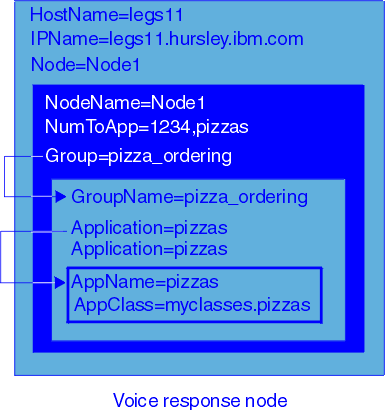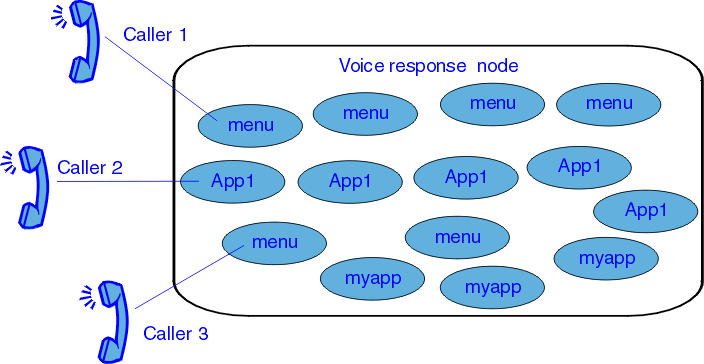To ensure that each call for a Java or VoiceXML application is answered, it is essential that sufficient copies of the application are running all the time. This means that you need to start the applications as soon as the node is started. To achieve this, define a GroupName configuration entry that identifies the applications to be started, and then add the name of this group to the NodeName entry of an application node. (Ten identical Application keywords mean ten instances will be started.)
Important: Do not configure more than 30
applications to run on the same application node.
# A group that contains two instances of the pizzas application GroupName=pizza_ordering Application=pizzas Application=pizzas ; NodeName=Node1 NodeClassPath=/home/dtuser/myapps/pizzas.jar NodeDefLocale=en_GB NumToApp=123456,pizzas Group=pizza_ordering ;
Figure 1 shows an example of the configuration entries necessary as a series of nested boxes. (Figure 1 shows the equivalent picture, when the application is started in an application node.)
Figure 1. Configuration entries for an application
running in the voice response node


Figure 2 shows multiple instances
of applications waiting for calls. Whenever a call comes in for a
number for which no application is waiting, the default application
is started up and handles the call.
Note: You must have sufficient copies of VoiceXML or Java applications
running when the application is started. This applies equally to applications
started from a CCXML document and applications started from a NumToApp mapping.
Figure 2. Multiple instances of applications waiting
for calls

